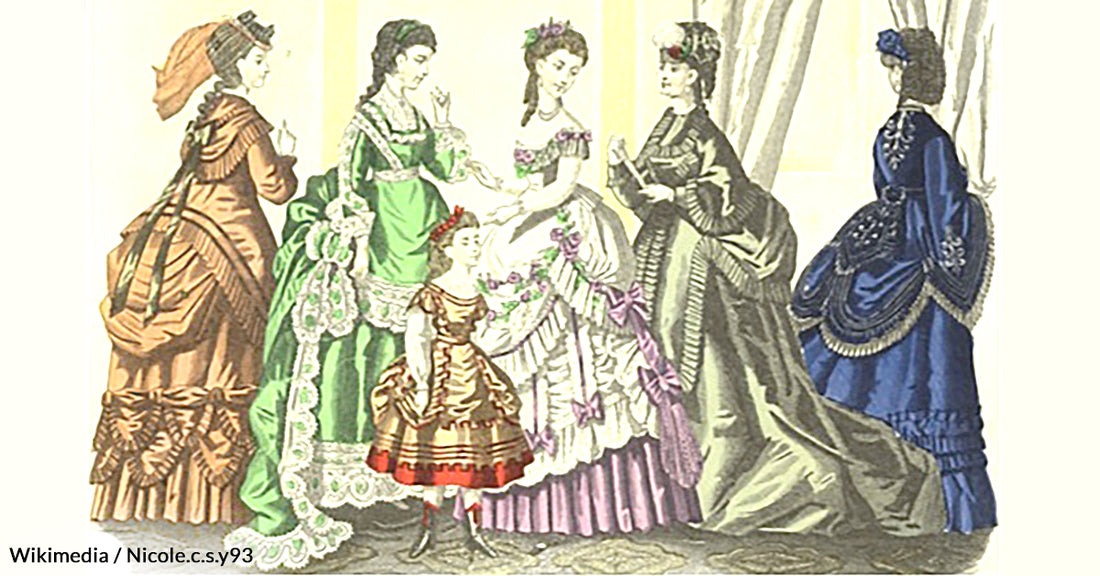Which Of These Victorian Era Fashion Trends Would You Want To Make A Comeback?
Louise Peralta
The Victorian era was a wild time, to put it plainly, and it is often romanticized.
You have revolutions, political reforms, and social changes, and so many new inventions were made during those times. But what do most people think about when they think of the Victorian era?
Fashion.
They’re classy, luxurious, and iconic. They serve more than just as clothes, but as a way to show where you belong in society. And as with any generation that has and still is existing, fashion trends tend to come up randomly.
Within the Victorian years, fashion evolved into a more nonexclusive thing. While some items used to be separated by class, the industrial revolution helped the fashion industry advance by making it possible for clothes to be made cheaper, faster, and more accessible.
“In the 18th century, men and women both wore highly decorative silk clothes that set them apart from the rest of society. But in the 19th century, women’s fashions spread all along the social classes, and became quite different from the clothes that men wore. Men began to dress in dark wool, while women wore colorful silks,” explained Valerie Steele, director of The Museum at the Fashion Institute of Technology.
Here are some fashion trends that came from the Victorian Era.
Bustles
It’s a trend now, and it’s been a trend before! Having a big behind was trendy back in the Victorian era. It gave women a new silhouette that contrasted with the harsher and more tailored shape on the front part of their dresses. Bustles were also used to support the draping fabric of skirts or dresses that were sometimes littered with various decorations such as ruffles.
Crinoline
As you can see from the image above, the crinolines were basically the first version of the bustle. If you’re a fan of social distancing, you’d probably prefer to use this one over bustles. Originally made with stiff materials, sometimes even steel, crinolines were practically impractical and sometimes even deadly (there have been reported cases of crinolines somehow catching fire and resulting in death back in 1858).
Fans
Those who have watched Enola Holmes 2, you’re probably familiar with this trend already. It’s a bewildering language, but fan flirting was a legitimate and accurate thing in the Victorian era. We all know how that era is notoriously conservative, but with fan flirting, anyone can engage in some silent and playful behavior without catching everyone’s attention. Scandalous!
Look I'm not saying you need to bring back Victorian fan flirting techniques but. Obviously bring back Victorian fan flirting techniques. pic.twitter.com/YdTMaLh5Gc
— Doodleplex (@BirbCarlin) April 1, 2021
Gloves
Gloves have become uncommon in today’s fashion. Only the bravest fashionistas out there can dare to wear and pull off such an amazing item. I’d buy a pair for myself, if not for my excessively sweaty hands. But gloves during the Victorian era were even more of a statement back then.
Gloves had more purposes than keeping your hands warm; they can be used to hide or flaunt your hands. The effects of manual labor can be seen on one’s hand, and gloves can be used to hide this fact. Wearing gloves in public was also required, as bare hands were seen as indecent exposure.
There were different gloves for various occasions. For example, there are short gloves for daywear, longer gloves for evening socializing, and gloves to wear and remove during dinner. In an old book published in 1860, The Gentlemen's Book of Etiquette, and Manual of Politeness, it was believed that Englishmen back in 1860 must wear six pairs of gloves in a day.
“To be in the fashion, an Englishman must wear six pairs of gloves in a day:
In the morning, he must drive his hunting wagon in reindeer gloves.
In hunting, he must wear gloves of chamois skin.
To enter London in his tilbury, beaver skin gloves.
Later in the day, to promenade in Hyde Park, colored kid gloves, dark.
When he dines out, colored kid gloves, light.
For the ballroom, white kid gloves. (Read elsewhere, "perfectly spotless" and be replaced immediately if soiled.)
Thus his yearly bill for gloves alone will amount to a most extravagant sum."
Hues
New dyes were discovered during the Victorian era. While trying to discover a treatment for malaria, chemist Sir William Henty Perkin accidentally made a synthetic organic dye called mauveine. Perkin eventually moved to produce dye industrially, helping others produce dye by giving technical advice and publicizing his invention.
Dyes used to be made from natural sources such as plants and insects; these factors made dyed products expensive. With Perkin’s discovery, dye became more accessible. Purple was considered the color of royalty, but with the discovery of mauveine, other people were able to wear similar colors at a much more affordable price.
What do you think about these fashion trends? Would you like to bring an item or two back in fashion?

A homebody who's in a never ending journey of being my own person.
A dog mom, a gamer, and a graphic designer.
I've been balancing my time between working for myself and for my family and have been enjoying my free time by either reading books, listening to music, or playing games.





















